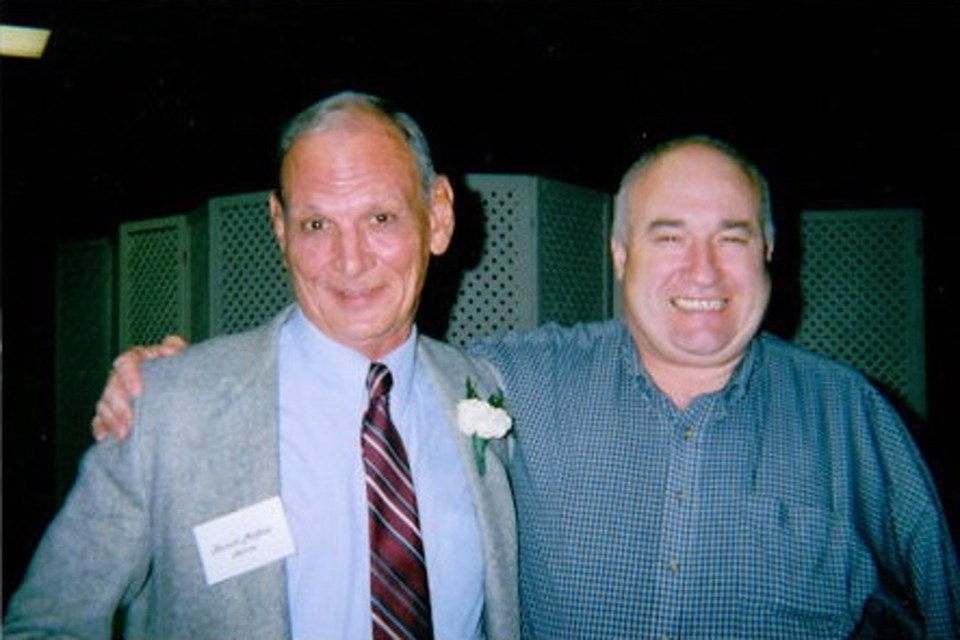The night of Wayne Mallette's homicide on Sept. 15, 1956, Ron Moffatt was at Toronto's Metro Theatre on Bloor Street West, watching Kirk Douglas poking out the eye of a hideous cyclops in Ulysses, and Robert Taylor hideously exterminating an entire herd of buffalo in The Last Hunt.
Exactly the kind of lurid cinematic fare that enthralled 1950s adolescents.
Witnesses corroborated the presence of Moffatt, then 14 years old, at the theatre.
But a juvenile court judge concluded that Moffatt was actually over at the Canadian National Exhibition grounds, smothering the seven-year-old Mallette boy's face in the dirt.
Moffatt, 14 years old at the time, was convicted of juvenile delinquency under what was then known as the Juvenile Delinquents Act, the Canadian law used to prosecute youth for criminal offences from 1908 to 1984.
Then, as now, the names of young offenders couldn't be made public unless they were 18 or older, no longer in custody, and agreed to the publication.
As it turned out, Moffatt was not Mallette's murderer.
After eight months in custody, his wrongful conviction was overturned.
Despite many requests to tell his story, Moffatt consistently refused to speak to reporters or allow his name to be published.
For decades, he kept this dark chapter of his life secret from family and friends.
Even his three children didn't find out until they were in their 30s.
But over the years, Ron Moffatt's name nonetheless managed to slip out.
Researching a soon-to-be-published book about the case, true-crime writer Nate Hendley found that the Annual Report of the Chief Constable of the City of Toronto for the Year 1956 illegally named "one Ronald Moffatt, 14 years" as having been convicted in the Mallette homicide.
Another crime writer, Mark Bourrie, interviewed Moffatt and named him with permission in the second edition of his 1997 book By Reason of Insanity, the story of Wayne Mallette's actual killer, David Michael Krueger (birth name Peter Woodcock).
In all, Krueger/Woodcock killed four times, earning him the distinction "Canada's youngest serial killer."
Bourrie also named Moffatt in a January, 2016 opinion piece he wrote for the Toronto Star, titled Why Innocent Kids Confess to Crimes, referring to him as "a retired school caretaker in Northern Ontario."
Moffatt has lived here in Sault Ste. Marie since 1970.
But few Saultites, if any, connected the dots between Ron Moffatt the school caretaker and SooToday cartoonist, and the Ron Moffatt named in Bourrie's writings.
So why is the full story of Moffatt's wrongful conviction only surfacing now, in Nate Hendley's compelling new book, The Boy on the Bicycle?
Hendley says, and Moffatt confirms, that Moffatt finally decided he wanted his side of the story to be told.
Moffatt tells SooToday that he was dissatisfied with the way he was depicted in the first edition of Mark Bourrie's book, and contacted the author about the possibility of a new volume focused on his wrongful conviction.
Bourrie has been a law student at University of Ottawa in recent years and wasn't able to take on the project.
Moffatt liked a book Nate Hendley had written about the 1959 Steven Truscott case and approached him.
Hendley was interested.
"There was never any question from Ron that I would be paying him for his story," Hendley tells SooToday.
"He is hoping that the book brings his story out into the open, though it might be an avenue for getting compensation from the Ontario government."
"Ron is receiving no pay whatsoever for the book. He came to me simply trying to tell his story. He saw my book on Truscott," Hendley says.
In the book, the author goes into more detail about how the Ron Moffatt book came to be.
"No one had written a complete book about Moffatt's wrongful conviction," he wrote.
"There was a very human side to the story as well: unlike Steven Truscott, Moffatt never received an official apology, much less compensation for his arrest and incarceration."
"I contacted my publisher, an independent firm called Five Rivers Publishing, and told her about the Moffatt case. We both decided a book was in order."
But Hendley was writing a 120,000-word crime encyclopedia for a U.S. publisher and he needed to finish that big project first.
"Moffatt was patient with all the delays. We kept in regular contact and he frequently sent me new information about his case," he wrote.
Still, finding records of a 62-year-old criminal investigation and court transcripts often proved frustrating.Repeatedly, his freedom-of-information requests received responses that no documents had been retained.
But Hendley persisted and was supplied with photocopied police memoranda, autopsy reports, judges' verdicts and teletype messages from a fellow crime writer.
Moffatt, of course, was a major source of information.
"He always responded with dignity and a wealth of detail," Hendley says.
"There was very little other evidence against him, except speculation."
The Boy on the Bicycle is a 230-page trade paperback available Aug. 1 from Five Rivers Publishing Co., Amazon and iBooks.
